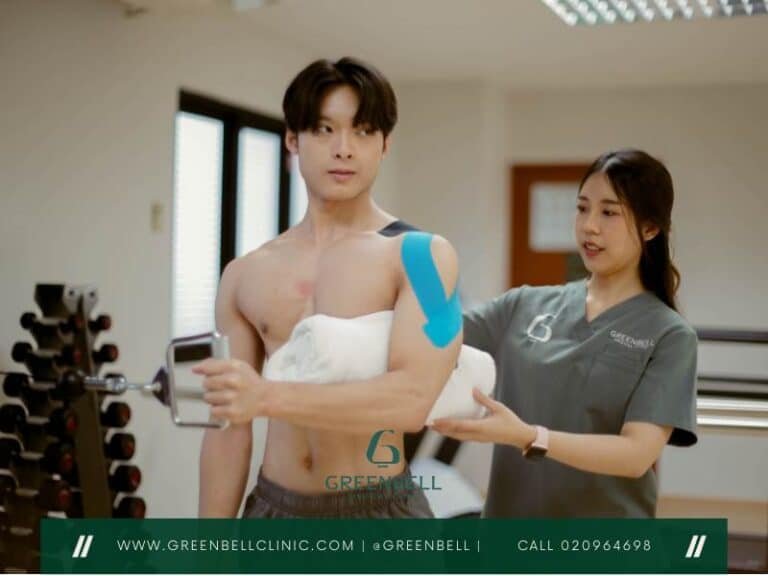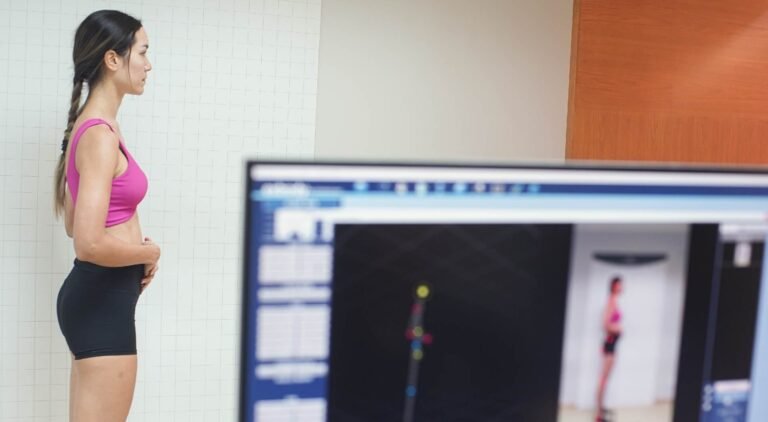Keeping your spine healthy is key to feeling good overall. But many people don’t know much about its complex structure. This guide will help you understand your spine better, so you can take care of your back and avoid common problems.
We’ll look at the spine’s main parts, like the vertebral column, spinal cord, and discs. You’ll learn how these work together to support and protect your body. Knowing this can help you keep your spine healthy and avoid serious issues.
We’ll also talk about nerve roots, facet joints, and how ligaments and muscles help keep your spine stable. With this knowledge, you can make better choices for your spinal health. You’ll be able to take steps towards a back that’s free from pain and well-aligned.
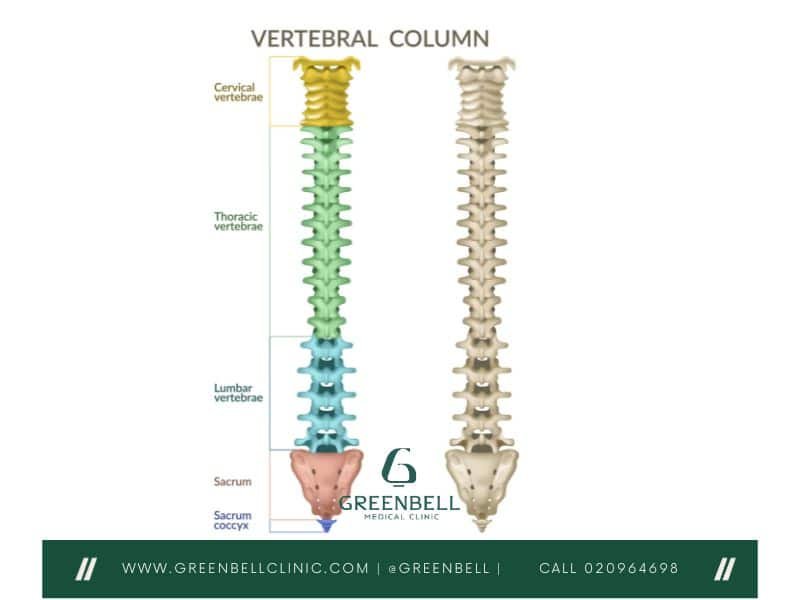
Key Takeaways
- Gain a comprehensive understanding of spine anatomy, including the vertebral column, spinal cord, intervertebral discs, and spinal curvatures.
- Discover the importance of maintaining proper spinal alignment and the role of ligaments and musculature in stabilizing the spine.
- Learn about common spinal conditions and injuries, equipping you with the knowledge to recognize and address potential issues.
- Develop a deeper appreciation for the intricate workings of the spine and its vital contribution to overall physical well-being.
- Empower yourself to make informed decisions about your spinal health and take proactive steps towards a pain-free, well-aligned back.
Exploring the Vertebral Column
The vertebral column, also known as the spinal column, is vital for our health. It’s made up of 33 vertebrae divided into different parts. Each part has its own role and features.
Cervical Spine: The Neck Region
The cervical spine, or neck, has 7 vertebrae. It supports the head and allows for movement. This part protects the spinal cord and helps us move our necks.
Thoracic Spine: The Upper Back
The thoracic spine is below the neck and has 12 vertebrae. It keeps the heart and lungs safe. It also helps with posture and stability.
Knowing about the vertebral column structure is key to a healthy back. Understanding the cervical spine and thoracic spine helps us take care of our backs. This knowledge is important for our daily lives.
Spinal Cord and Nerve Root Anatomy
The spinal cord is a key part of our nervous system. It runs through our vertebrae, keeping it safe. From the spinal cord, nerve roots branch out. They carry signals between our brain and body. Knowing how the spinal cord and nerve roots work is key to keeping them healthy.
The spinal cord has gray and white matter. Gray matter has nerve cell bodies, and white matter has fibers that send information. Nerve roots come out of the gray matter, going through spaces in the vertebrae. These roots help us feel and move by sending and getting signals.
- The anterior (ventral) nerve roots send signals to muscles, helping us move and contract.
- The posterior (dorsal) nerve roots bring back information from our body, like touch and pain.
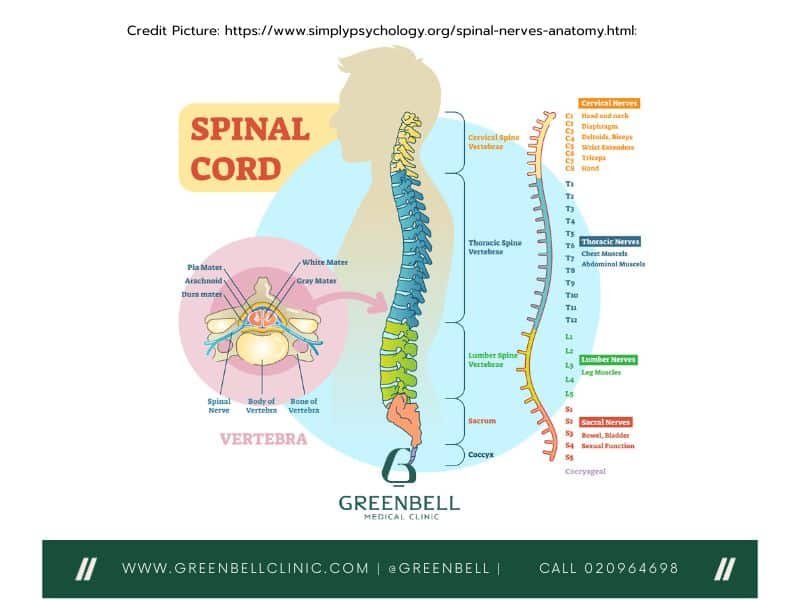
Knowing about nerve root anatomy is important. It helps keep nerves working right and prevents problems like spinal cord compression. These issues can cause pain, numbness, and weakness.
| Spinal Cord Region | Key Anatomical Features |
|---|---|
| Cervical Spine | Helps move the neck and head, protects nerves for the arms |
| Thoracic Spine | Supports the rib cage, keeps the spinal cord and nerve roots safe for the torso |
| Lumbar Spine | Keeps the lower back stable, protects nerves for the legs |
It’s important to know about the spinal cord and nerve roots. This knowledge helps keep our spine healthy and prevents problems. By understanding this, we can take care of our nerve root anatomy and keep our nervous system working well.
Intervertebral Discs: The Shock Absorbers
The human spine is a complex structure. Intervertebral discs are key to its function. These discs act as shock-absorbing cushions between vertebrae, allowing for smooth movement and flexibility. Knowing about these discs is vital for a healthy spine.
Composition and Function
Intervertebral discs have a tough outer layer called the annulus fibrosus and a soft, gelatinous inner core, the nucleus pulposus. This design helps them absorb forces from daily activities like walking and bending. They also enable vertebrae to move and rotate smoothly.
Common Disc-Related Conditions
- Herniated Discs: This is when the inner nucleus pulposus bulges through the outer annulus fibrosus. It can press on nerves, causing pain, numbness, or weakness.
- Spinal Stenosis: This is when the spinal canal narrows, compressing the spinal cord and nerve roots. It can lead to pain, tingling, and numbness in the limbs.
Keeping the intervertebral discs healthy is essential for a well-functioning spine. Understanding their role helps prevent and manage disc problems. This promotes a lifetime of spine health.
Facet Joints: Enabling Spinal Mobility
The human spine is amazing, made of vertebrae that support, flex, and move. At its core are the facet joints, small but key parts. They are vital for the spine’s health and function.
Facet joints are small, paired joints between vertebrae. They connect one vertebra to the next. These joints help the spine move smoothly, allowing it to bend, twist, and turn.
Without the facet joints’ mobility, the spine would be stiff and unable to move. These joints are essential for a healthy spine. They help the vertebrae move together and prevent wear and tear.
Knowing how facet joints help with mobility is key for a strong, flexible back. By understanding their role, we can take care of our spine. This helps prevent problems from restricted or damaged facet joints.
Spinal Curvatures: Maintaining Posture
The human spine is amazing, with three main curvatures. These curvatures help keep our posture right and our weight balanced. They are key to avoiding strain or injury.
Cervical and Lumbar Lordosis
The neck, or cervical spine, has a gentle inward curve called cervical lordosis. This helps carry the head’s weight and allows for easy head movement. The lower back, or lumbar region, has a slight forward curve named lumbar lordosis. It helps absorb shock and spreads out the body’s weight evenly.
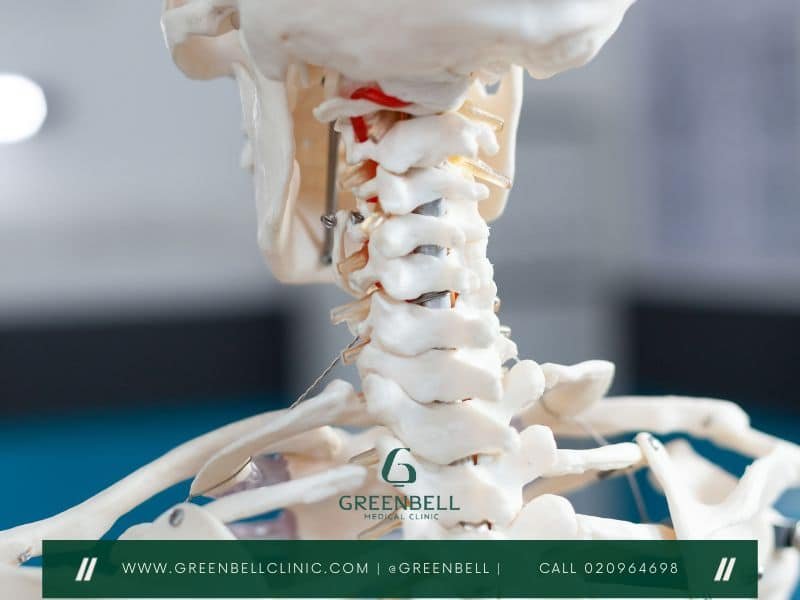
Thoracic Kyphosis
The upper back, or thoracic region, has a slight outward curve called thoracic kyphosis. This curve balances our posture and supports the shoulders and chest.
These spinal curvatures work together to keep our posture right and support our body. Keeping these curvatures aligned is key for good back health. It helps avoid problems like spinal curvatures, cervical lordosis, lumbar lordosis, and thoracic kyphosis.
| Spinal Region | Curvature | Description |
|---|---|---|
| Cervical | Lordosis | Gentle inward curve that supports the head |
| Thoracic | Kyphosis | Slight outward curve that balances posture |
| Lumbar | Lordosis | Slight forward curve that absorbs shock and distributes weight |
“Maintaining the correct spinal curvatures is essential for supporting the body’s structure and preventing strain or injury.”
Ligaments and Musculature: Stabilizing the Spine
The spine is a remarkable structure. It relies on a complex network of ligaments and muscles for stability, flexibility, and alignment. These elements work together to support the spinal column and allow for smooth movements.
Ligaments: Connecting the Vertebrae
Ligaments are strong, flexible bands of tissue that connect the vertebrae. They form a supportive framework for the spine. The anterior longitudinal ligament and the posterior longitudinal ligament are crucial. They run along the front and back of the vertebral column, respectively. These ligaments help limit excessive bending, providing essential ligaments stabilization for the spine.
Muscles: Supporting and Moving the Spine
Spinal musculature is vital for supporting and moving the spine. The erector spinae group helps maintain upright posture and facilitate backward bending. The transverse abdominis, a deep abdominal muscle, provides essential spinal musculature support. It stabilizes the spine during movement and everyday activities.
The coordinated effort of these ligaments and muscles ensures the spine remains stable and flexible. This system allows us to stand, sit, bend, and twist with ease. It also protects the delicate spinal cord and nerve roots from injury.
| Ligament | Function |
|---|---|
| Anterior Longitudinal Ligament | Limits excessive forward bending |
| Posterior Longitudinal Ligament | Limits excessive backward bending |
| Erector Spinae | Maintains upright posture and facilitates backward bending |
| Transverse Abdominis | Stabilizes the spine during movement and everyday activities |
spine anatomy understanding
Knowing about spine anatomy is key to a healthy back and avoiding spinal injuries. The vertebral body is at the center, supporting the whole spine.
The vertebral bodies are made of a strong outer layer and a soft inner layer. This mix gives the spine strength and flexibility. It helps the spine handle daily movements and activities.
The outer layer protects the spinal cord and helps muscles and ligaments attach. The inner layer is spongy and absorbs shock. This keeps the spine strong and flexible.
Knowing about the vertebral body helps spot spinal problems like vertebral body compression fractures and osteoporosis. These issues can cause pain and make it hard to move. Learning about spine anatomy helps keep your back healthy and prevents serious problems.
| Cortical Bone | Cancellous Bone |
|---|---|
| Strong, outer layer of the vertebral body | Spongy, inner layer of the vertebral body |
| Provides structural integrity and protection | Absorbs shock and distributes load |
| Facilitates attachment of ligaments and muscles | Contributes to the spine’s flexibility and resilience |
“Understanding the intricate composition of the vertebral body is the key to unlocking the secrets of spinal health and maintaining a strong, flexible back for years to come.”
Common Spinal Conditions and Injuries
The spine is amazing, giving us stability, flexibility, and support. But, it can still get hurt or develop problems. Herniated discs and spinal stenosis are two big issues.
Herniated Discs
A herniated disc happens when the soft part of a disc bulges out. This can press on nerves, causing pain, numbness, or weakness. It’s usually due to wear and tear or injuries, and often affects the lower back.

Spinal Stenosis
Spinal stenosis makes the spinal canal narrow, pressing on nerves. It can be caused by aging, bone spurs, or other conditions. Symptoms include pain, tingling, or numbness in the back, legs, or arms, and trouble walking or standing.
Knowing about common conditions that affect the spine helps us get the right treatment. Herniated discs and spinal stenosis might be tough, but there are ways to feel better and live better.
Conclusion
Understanding spine anatomy gives you a deeper look at how your body moves and protects your nervous system. With this knowledge, you can take steps to keep your spine healthy and avoid common problems. Taking care of your back is key to your overall health, helping you live an active and happy life.
The spine is a complex system of vertebrae, discs, and joints that supports your body’s movement and strength. Learning about the different parts of the spine, like the cervical, thoracic, and lumbar regions, shows its importance in our daily lives. Knowing about the discs, joints, and muscles helps us understand the balance needed for a healthy back.
Remember to focus on understanding your spine and keeping it healthy. Do regular exercises, keep good posture, and see a doctor if you have any back issues. By caring for your spine, you can enjoy a life full of movement and lower the risk of spinal problems. Use this knowledge to start a journey towards a stronger, healthier spine.


